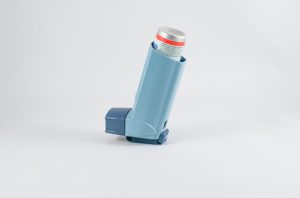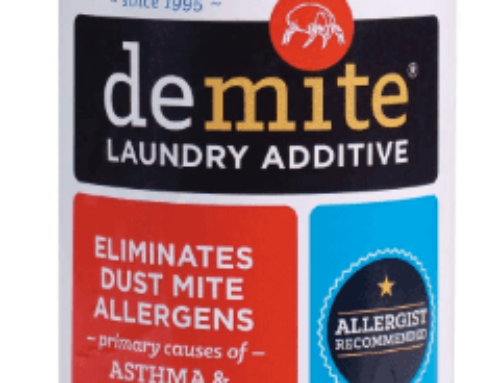Table of Contents
If I’ve realized that dust mites are more than mere irritants, I’ll waste no time in getting rid of these pests. Dust mites, while remaining hidden from eyesight, have the potential to cause or aggravate asthma. You do not want to take dust mite allergies lightly.
What Are Dust Mites
Dust mites are tiny creatures averaging 0.3 mm in size that grows in most households across the planet. These creatures thrive in a humid and moderately warm environment and feed on dead skin cells shed by humans.
As dust mites are too small for the eyes, you’ll only know the presence of these tiny pests in your home when you start developing allergic symptoms. I remembered how my son started blinking excessively as his eye gets irritated. Then, symptoms like coughing, runny nose, and nasal inflammation followed within a couple of weeks.
After ruling out external sources, I brought my son to the doctor where the condition was diagnosed as dust mite allergies.
Can Dust Mites Cause Asthma?

Both children and adults may develop an allergic reaction to dust mites. The symptoms weren’t caused directly by dust mites. Instead, the allergy is a reaction of our body towards the protein found in dust mites excretion when inhaled.
Dust mites allergy often start with mild symptoms but soon descend into the nasal blockage, inflamed throat and red eyes. When left untreated, dust mites can cause both adults and children to develop asthma.
Asthma is a condition where the airway reacts to triggers and become inflamed. This results in difficulty in breathing and sufferers often display symptoms of
- wheezing
- coughing
- short of breath
- a feeling of tightness in the chest.
According to a survey conducted by Asthma UK, 68% of participants cited dust as what triggered their asthma symptoms. In actual fact, it was the dust mites that are hidden in the dust that causes asthma.
A scientific study conducted by the University of Wales investigates the presence of dust mites in the lung and asthma. The study suggests that dust mites may actually cause respiratory epithelial cells to shed and feed on them. This process eventually diminishes the protection in the lung and causes the respiratory system to be highly sensitive to the dust mites allergen.
Dust Mites May Trigger DNA Damage
It seems that the damage caused by dust mites go beyond triggering asthma. According to an article in Healthline, patients who are already suffering from asthma may have their lung DNA damaged by dust mites.
A UCLA study, funded by the National Institute of Allergy and Infectious Disease, found that traces of genetic damage are present in the blood of asthma patients. The genetic damage was linked to the IL-13, a cytokine produces to mitigate inflammation in acute asthma sufferers.
The same study goes further to state that the genetic damage occurs not only on the lung, where it’s linked to asthma. Instead, signs of DNA damage found suggested the effect occurs across the body and may affect other organs.
When Should You See A Doctor?
You wouldn’t want to have full-blown asthma before paying a visit to your doctor. I’ve seen first hand how dust mites allergy symptoms can get worse within days. The endless coughing or nasal blockage can affect your daily life. If a child is having dust mites allergy, the suffering may be worse.
If you’re experiencing early dust mites allergy symptoms like coughing, runny nose, or red eyes you’ll want to consult a doctor for the appropriate treatment. These symptoms usually worsen when you’re indoor as your home is where the dust mites are concentrated.
Your doctor will diagnose the symptom and prescribe the necessary medications. Often, dust mites allergy is treated with anti-histamine, nasal spray and corticosteroid, depending on the symptoms.
However, if you start developing asthmatic symptoms, the doctor will prescribe medications used to keep asthma under control.
Remember that you shouldn’t self-diagnose and to always consult a doctor.
How To Prevent Dust Mites From Causing Asthma
There is no cure to asthma but you could manage it well with the right treatment. The same goes for dust mites as you can’t totally eliminate every single one of the pests but you can reduce their population to a non-threatening level.
Here are 3 quick tips that you can implement right now to remove dust mites from your home.
1. Clean Beddings Regularly
Dust mites are often found in great numbers in beddings. Therefore, it is crucial for you to clean your beddings more frequent than usual. As regular washing does little in killing dust mites or neutralizing their allergen, you’ll need to increase washing temperature or use a tumble dryer that exceeds 55°C.
Alternatively, you can use anti-dust mites detergents that are proven to be effective in killing dust mites.
2. Reduce Humidity
If you are suffering from dust mites allergy, you’ll find that the humidity in your home is too high for humans and conducive for dust mites. Reducing the humidity to 30%-50% helps to prevent dust mites’ growth.
For a start, open all the windows in your house to ensure the air is properly ventilated. Or you can get a portable dehumidifier to reduce the level of moisture in the air. When humidity drops to an acceptable level, dust mites will find it hard to grow.
3. Use A UV Vacuum Cleaner For Dust Mites
When dust mites are a serious issue in your house, a UV vacuum cleaner will come in handy. These vacuum cleaners are specially engineered to kill dust mites in the mattress. UV ray has been proven to disrupt the hatching process of dust mites and the heat emitted from the vacuum will kill the dust mites off.
Some UV vacuum cleaners also have a vibrating mechanism that beats dust mites hidden deep in the mattress to the surface. Once sucked into the vacuum, the dust mites and their excretions will remain trapped by the HEPA filter.
Final Thoughts
You should never take dust mites allergies for granted as it can potentially develop into asthma. Seek a doctor’s advice if you’re having dust mites allergies and take preventive measures to control dust mites’ growth in your home.
Do you have issues with dust mites or asthma? Share your thoughts in the comment below.
Related:




Leave A Comment